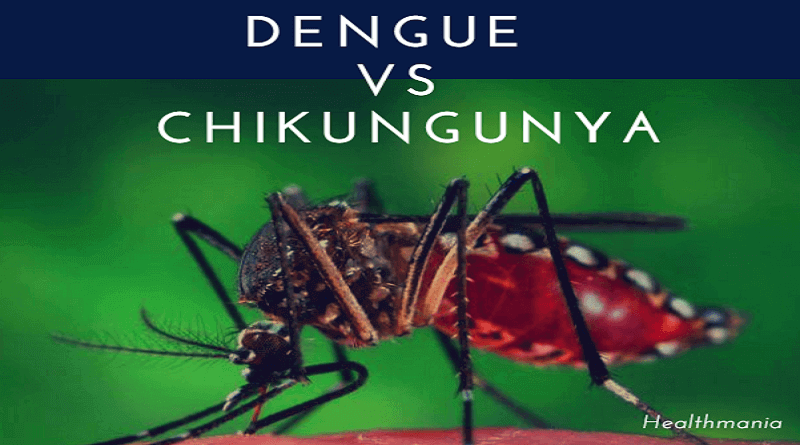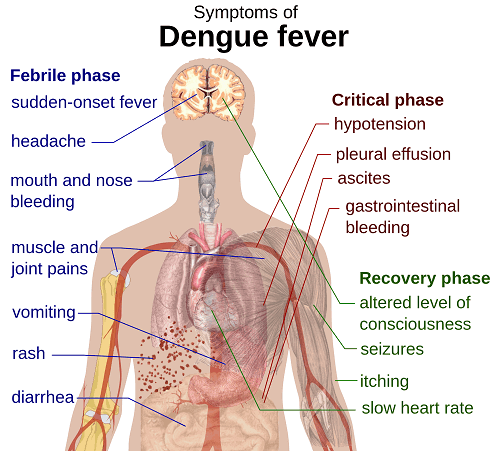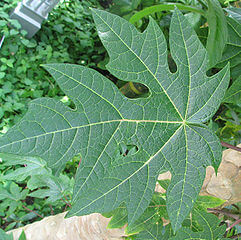
Dengue has managed to make it to the headlines this season, be it the metropolitan cities like Delhi, Bombay or the endemic cities like Mangalore, Kerala. Last year in Delhi alone, more than 10,000 Dengue outbreaks were recorded. To our dismay, this year another mosquito-borne disease-Chikungunya has created havoc these days. Both of these occur due to unhealthy sanitation measures and environment problems. It seems like it is now Dengue vs Chikungunya as if both are trying to be supreme here, who will affect or kill more number of people.
Dengue Fever Has Spread to More than 150 Countries in Less Than 50 Years
So what is Dengue and Chikungunya and how can we identify their symptoms? How can we make a difference and prevent these deadly diseases? Let us have a close look at both these vector-borne diseases and know the similarities and differences associated with these.
Dengue Vs Chikungunya
Causes
Dengue is a disease complex which can be asymptomatic or involve manifestation such as ‘classical’ Dengue fever, Dengue hemorrhagic fever without shock or Dengue Shock Syndrome. It is caused by arbovirus known as Dengue virus with four serotypes- DENG-1-4 and transmitted by Aedes aegypti mosquito. Infection with any one serotype confers lifelong immunity to that virus type infection.
Similarly, Chikungunya is another dengue-like febrile hemorrhagic disease which is caused by the chikungunya virus and is transmitted by the Aedes mosquito. It is also known as “fever of the joints.”
Dengue vs Chikungunya: Symptoms

Dengue, as already mentioned is a disease complex and comes with varied presentations. Among some, it may be a minor infection, being asymptomatic while in symptomatic cases, the presentation varies from mild, moderate or severe degree.
1) In mild cases, Dengue presents as an undifferentiated fever also called viral syndrome in patients affected first time with dengue virus. It comprises of sudden onset of high fever with chills and intense headache.
2) Severe muscle and joint pain on all movements due to which it is characterised by ‘break-bone fever.’
3) Pain around the eyes known as retroorbital pain. If not properly treated in this phase, this can further progress to ‘dengue hemorrhagic fever.’
4) Nausea and vomiting
5) Several superficial bleeding manifestations known as petechial hemorrhages over the body.
6) Drop in the platelet counts in blood to drastic levels. Proper care is required because further this stage is the most severe and serious condition called ‘Dengue Shock Syndrome’. During this stage, the patient may suffer from high pulse rate, decreased blood supply to the brain, altered mental state etc. If not treated, this can lead to death.
Chikungunya too has similar symptoms in the beginning stages.
1) Characterised by sudden onset of high fever with chills, just like Dengue fever.
2) Stiffness in joints of both hands, elbow, shoulder and foot.
3) Manifests as a rash on trunks and limbs.
Difference: Dengue infection is more likely to progress to the complicated stages of hemorrhage and shock-like leading to death if untreated, while chikungunya otherwise doesn’t progress to severe stages.
Note: You might have heard that the death toll is increasing in cases having both dengue and chikungunya than those having dengue or chikungunya alone. Dengue occurring in a patient who is already infected with chikungunya progresses to a critical state much faster than dengue case alone.
Dengue Vs Chikungunya: Treatment
Both Dengue and Chikungunya are viral infections and hence there is no specific treatment for either of them. They are usually self-limiting.
Following treatment methods are used in both cases to control the disease:
1) In earlier stages, they are treated with fluid management and symptomatic management.
2) Antipyretics like paracetamol for the fever and tepid sponging in case if high fevers.
3) Oral rehydration solution (ORS) for compensating the fluid loss at home and in mild cases.
4) A patient needs to get admitted in case there is severe dehydration or platelet counts drop.
Ayurvedic Treatment:

Papaya Leaf: According to a research from Ayurvedic researchers, there are certain enzymes present in the Papaya leaf including Chymopapain and Papain which have the ability to fight the infection by boosting the platelets and White blood cells.
How to Use: Take fresh Papaya leaves (leave the stem part), grind it and make a paste. Squeeze it using a clean cloth to extract the juice from the paste. You can mix the juice with orange juice, since it is bitter and have it daily until you get relief.

Giloy (Tinospora Cordifoila): Also known as Amrita in Ayurveda, it is known for its ability to strengthen the immune power of the body. It kills macrophages present in the body.
How to Use: Cut branches of Giloy into small pieces and boil them. Use the juice 3-4 times a day to notice a considerable rise in the platelet count.
Our role as Individuals in the Prevention
Vector Control: Aedes mosquito is responsible for the spread of both dengue and chikungunya. Effective measures to curb its population will help in reduced cases of both the diseases. Measures should be taken to eliminate the breeding grounds of the mosquito in and around the residential areas. This can be achieved by –
1) Effective water storage options
2) Preventing water accumulation in and around your house.
3) proper covering of stored water.
4) Larvicide spray like Abate is widely used now. It is an organophosphorus insecticide that prevents breeding for up to 3 months and does not harm or affect the taste of the water.
Personal Protection: This includes the use of:
1) Bed-nets while sleeping.
2) Mosquito-repellant creams, coils, liquids, etc.
3) Wearing long sleeves and pants to prevent exposure in case of epidemic times.
Having said and done these, I guess the most important point is awareness. As long as you are aware of the cause and spread of the disease, you are deemed to be cautious about its prevention. After all, as the saying goes, “An ounce of prevention is worth a pound of cure.” Let us all heed to it and focus on prevention of the rising cases of dengue and chikungunya rather than their cure.